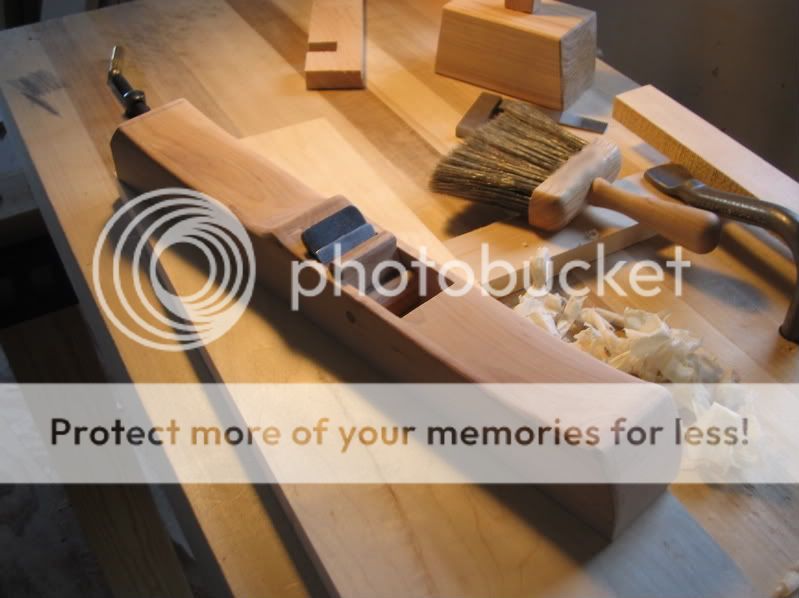Hi all
I had a general query regarding Jointing planes, and hope that somebody can satisfy my curiosity.
I believe that perceived wisdom is that any edge over a few feet long should be jointed with a #7 or higher (like Rob's WIP woodie), depending on the length of the board.
But why is this?
I read (probably on this forum) that the LV BU Jointer, whilst the same size as a #7, has the jointing "performance" of a #8 because the mouth is set back a little further from the toe than a #7. Is this true? If so, what about HNT try/jointer planes - their mouths are even further back from the toe. On Terry Gordon's website he refers to jointing boards upto 6' long with a Try plane - 18". Yet one seldom hears of a Bailey pattern #6 plane being used to joint such long edges.
Hope this makes sense.
Cheers
Karl
I had a general query regarding Jointing planes, and hope that somebody can satisfy my curiosity.
I believe that perceived wisdom is that any edge over a few feet long should be jointed with a #7 or higher (like Rob's WIP woodie), depending on the length of the board.
But why is this?
I read (probably on this forum) that the LV BU Jointer, whilst the same size as a #7, has the jointing "performance" of a #8 because the mouth is set back a little further from the toe than a #7. Is this true? If so, what about HNT try/jointer planes - their mouths are even further back from the toe. On Terry Gordon's website he refers to jointing boards upto 6' long with a Try plane - 18". Yet one seldom hears of a Bailey pattern #6 plane being used to joint such long edges.
Hope this makes sense.
Cheers
Karl


































